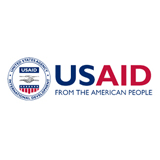
Mother-to-child transmission (MTCT) of HIV accounts for 90 percent of HIV infections among children. The Joint U.N. Programme on HIV/AIDS (UNAIDS) estimates that 2.1 million children under 15 years of age were living with HIV and 430,000 children were newly infected in 2008. In the same year, 280,000 children died of AIDS-related causes (World Health Organization [WHO] 2010a). While adults living with HIV can remain asymptomatic for years, approximately half of all infants living with HIV will die before their second birthday if they are not treated (WHO 2010a).
In light of these statistics, prevention of mother-to-child transmission (PMTCT) has received substantial attention in the fight against HIV. Timely initiation of PMTCT can reduce transmission rates in low-income countries from 35 percent to less than 5 percent (WHO 2010a). Many governments in developing countries are taking steps to implement the four-pronged approach to PMTCT recommended by WHO as a way to provide comprehensive maternal and child health care. Governments are also seeking to operationalize new WHO guidance recommending earlier provision of antiretroviral therapy (ART) and antiretroviral (ARV) prophylaxis for women living with HIV and their unborn or newborn infants.
Programs in low-resource settings, where the health care system is often weak, face numerous barriers to accessible PMTCT services and have difficulty meeting the increased demand implied by global recommendations. Yet there are examples of innovative approaches that have increased access to and utilization of PMTCT services. This report covers each step of the PMTCT continuum and outlines what PMTCT services are recommended at each stage according to WHO recommendations, describes major barriers, and lists country-based approaches that programs have taken to address them. The document also describes strategies for providing PMTCT while addressing systemic barriers to access, including examples of emerging and proven practices and their effect on PMTCT outcomes.